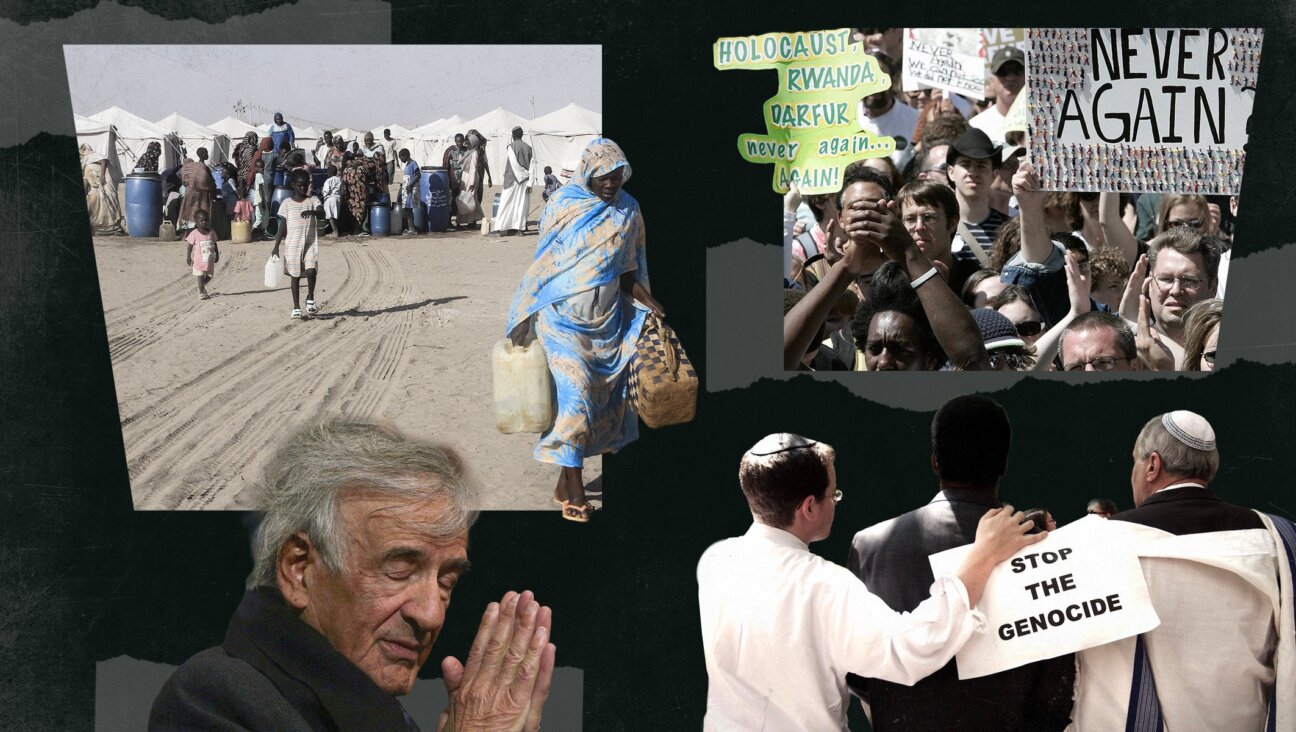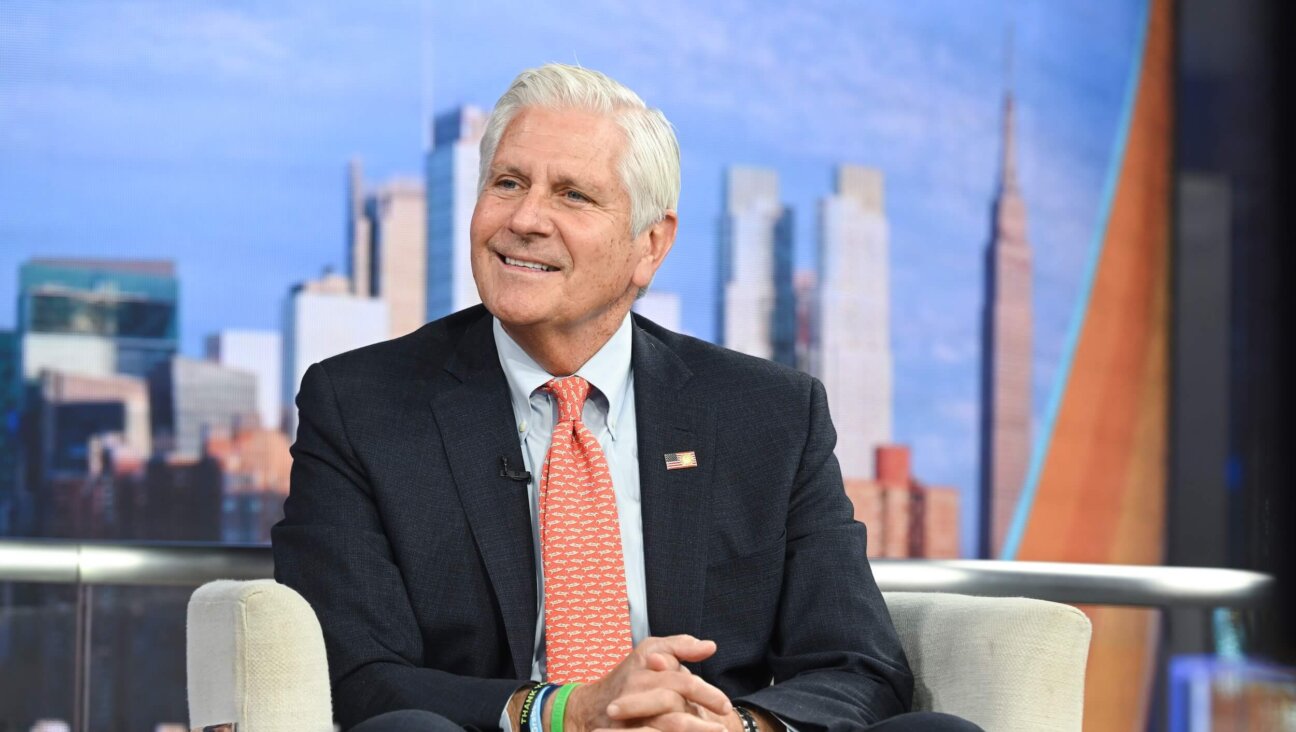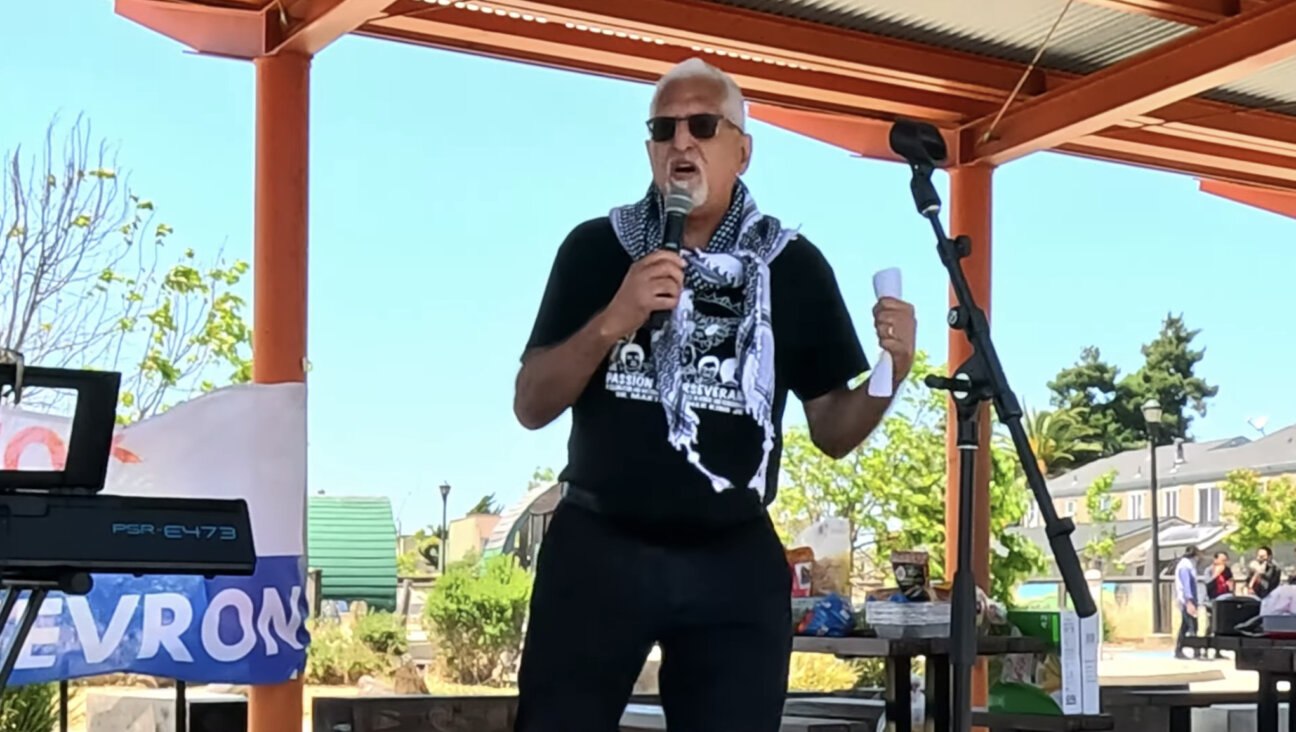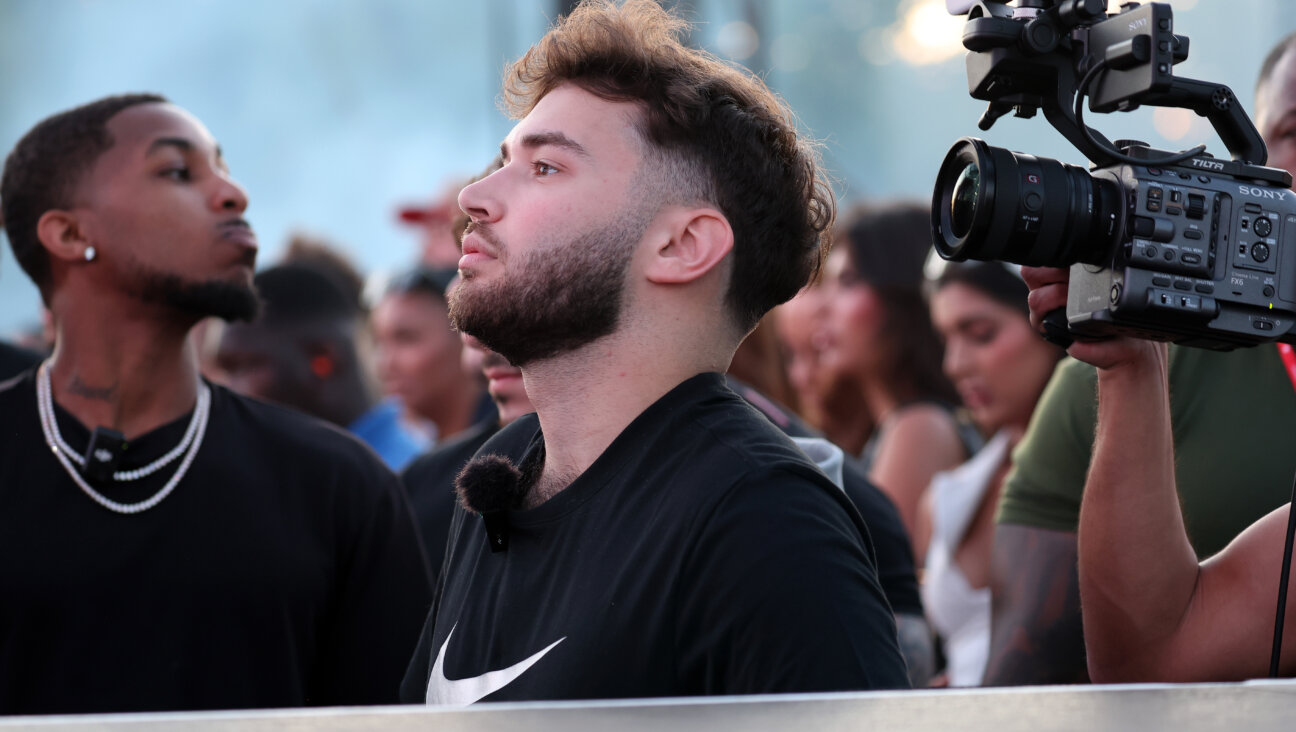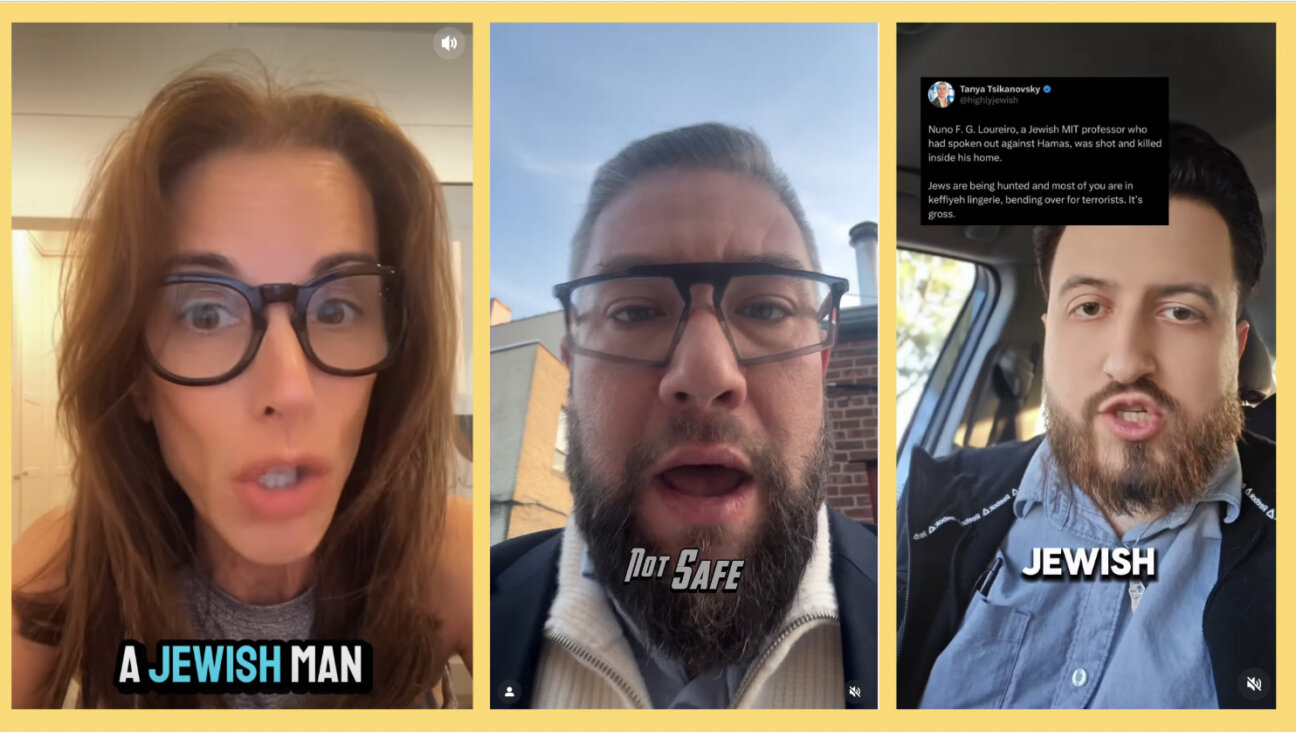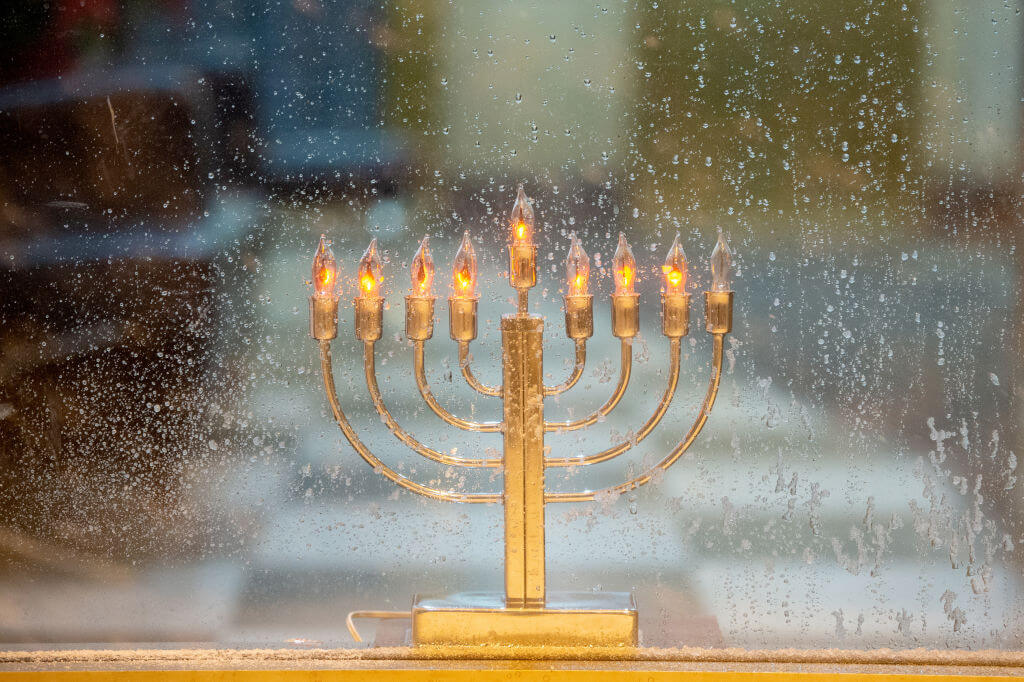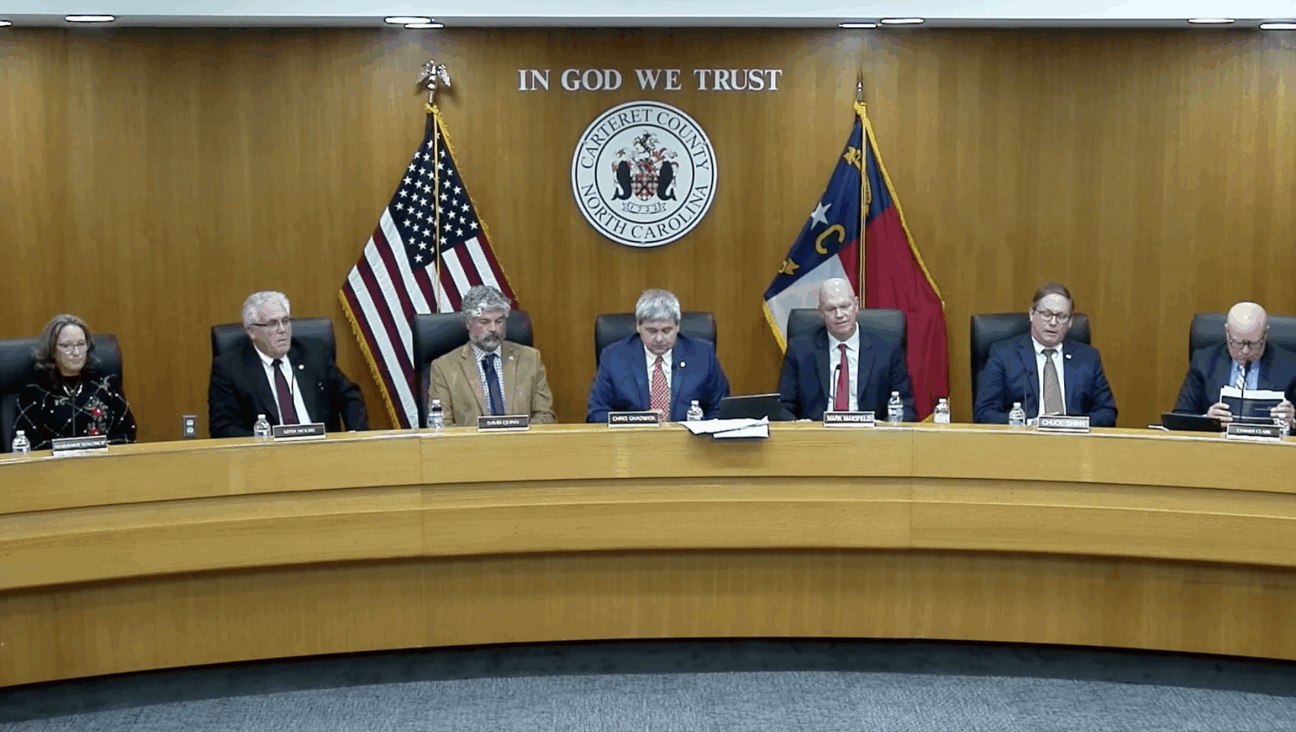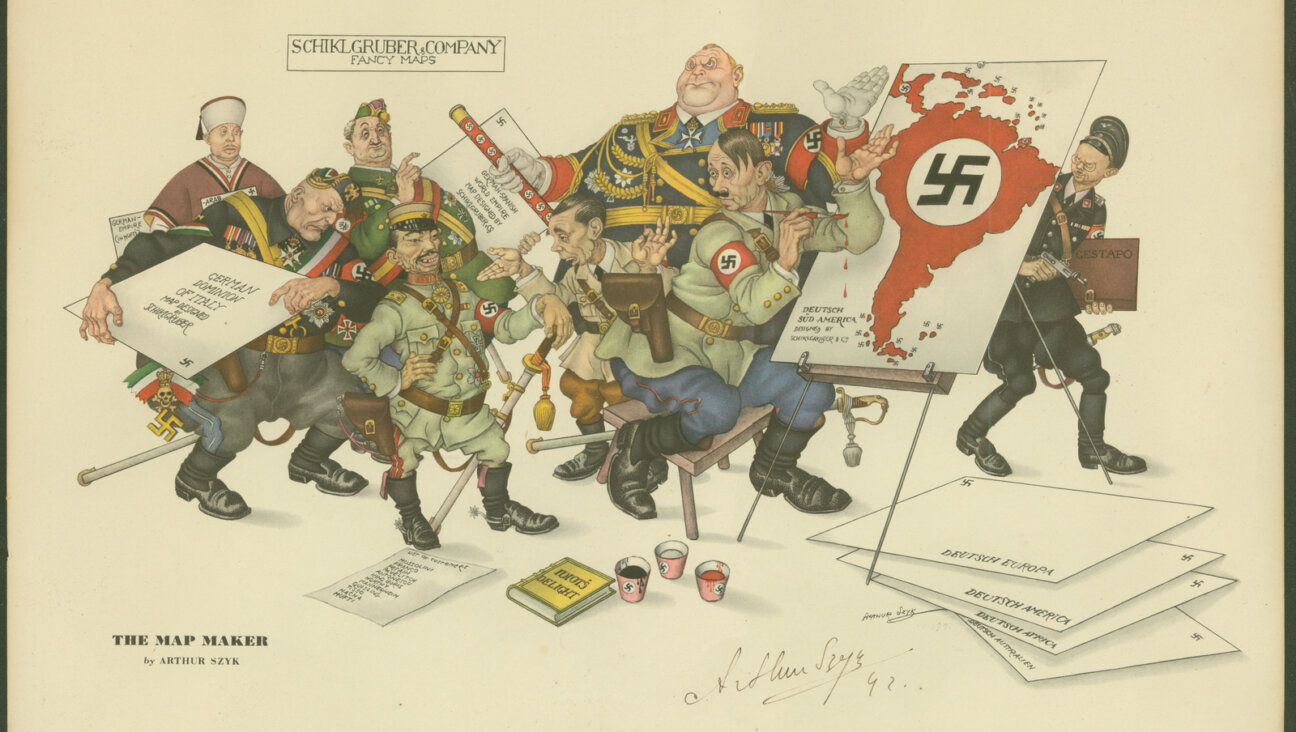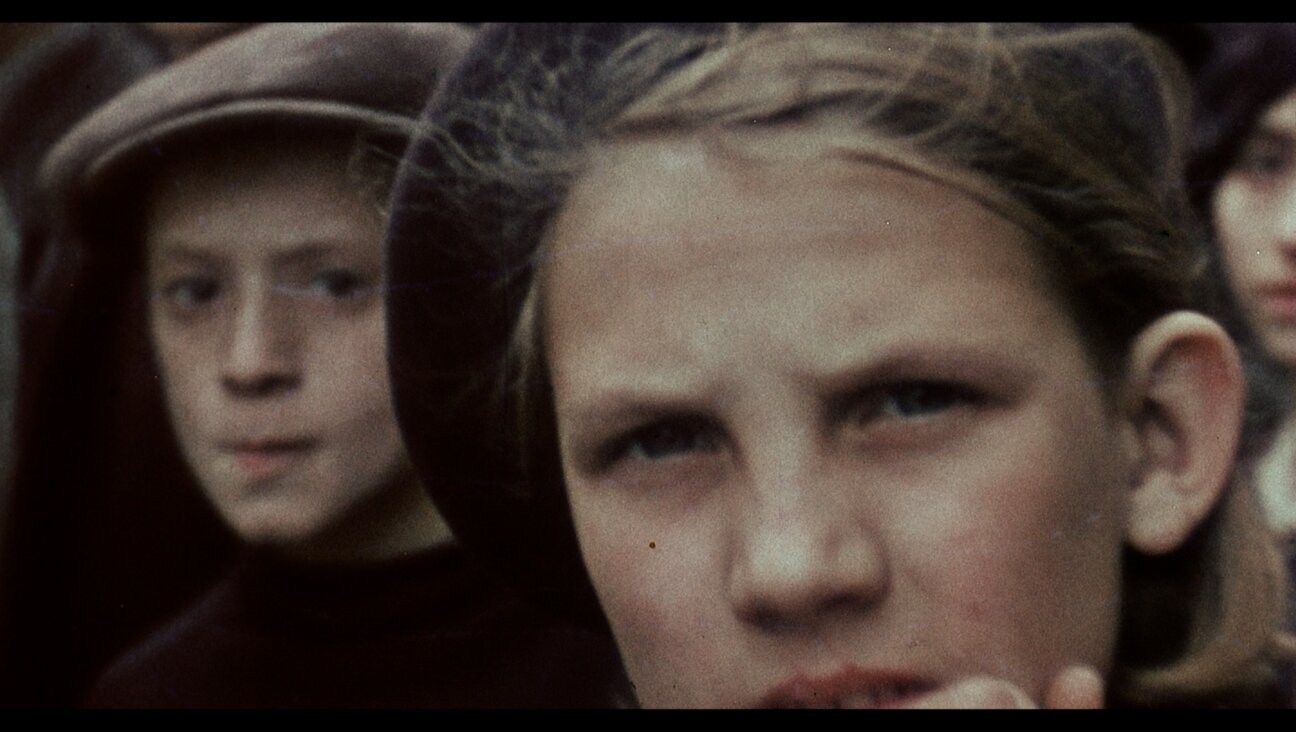Pro-Nazi singer sells out Zagreb arena as Croatia’s collaborationist past sheds its taboo
Croatian Jews say little effort is made to tamp down valorization of the brutal Ustaše collaborationist regime
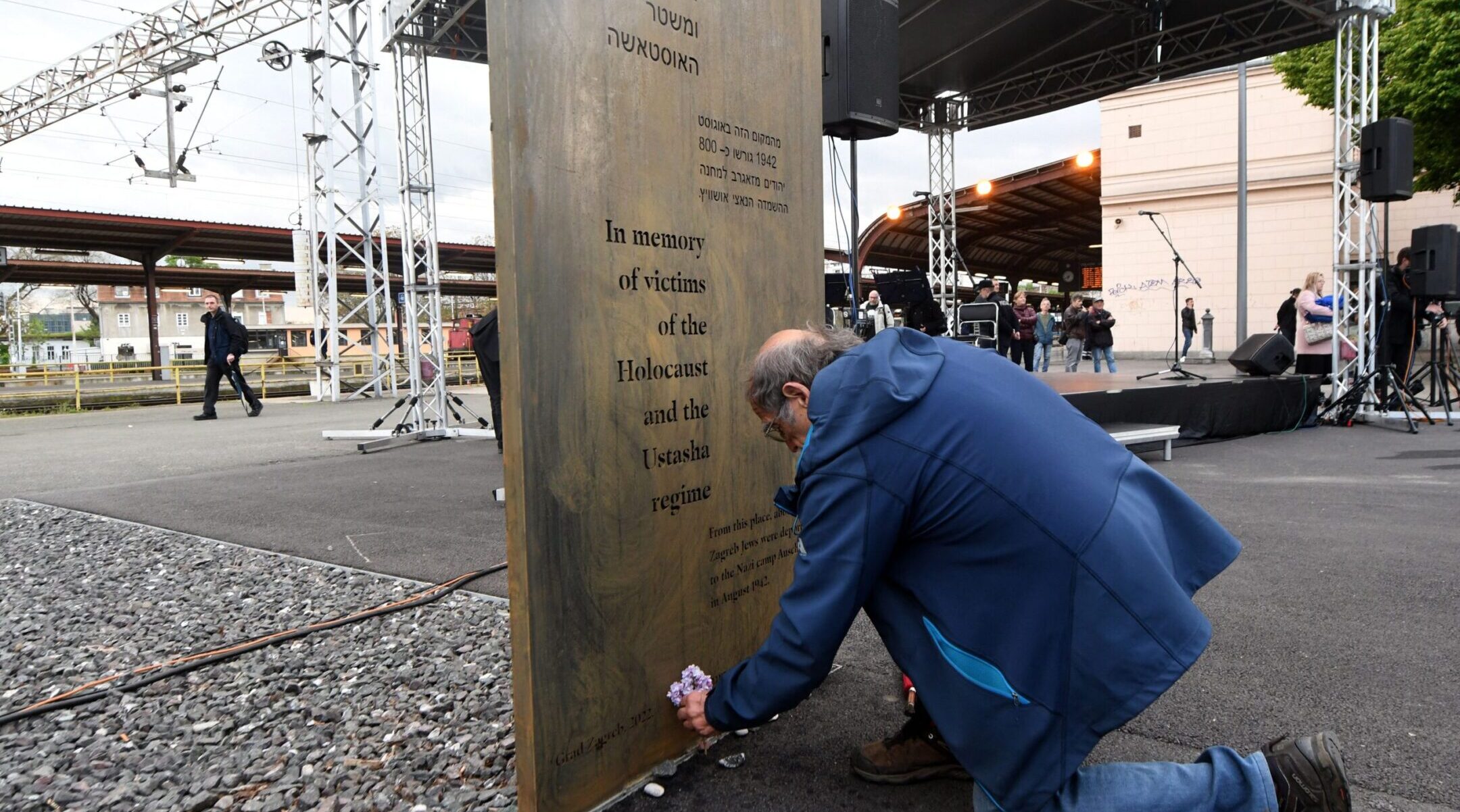
A man placed a bouquet of flowers in front of a memorial plaque near the 12-meter (39-foot) high memorial for the victims of Holocaust and Croatia’s pro-Nazi World War II regime unveiled on April 27, 2022, erected just next to Zagreb’s main railway station. (Denis Lovrovic/AFP via Getty Images)
ZAGREB, Croatia — Among the Jews who gathered in nine cities and towns in this former Yugoslav republic last week to commemorate Yom HaShoah — Holocaust Remembrance Day — was Darko Fischer, one of about 140 remaining survivors of a wartime regime whose fascist leaders were considered even more brutal than the Nazis.
“It was worse than Auschwitz. Here they had crematoria and massive killing, but also physical and psychological torture. It was extremely cruel, especially in Jasenovac,” Fischer, 87, said during a recent interview. “Many Jews, including some of my relatives, finished their lives there. I survived just by chance.”
Fischer survived because his father made arrangements in 1941, when the fascist Ustaše regime began enacting antisemitic laws, for the family to leave Croatia. His father was murdered in 1944 after the Nazis invaded Hungary, but the rest of the family survived and returned to Croatia after the war.
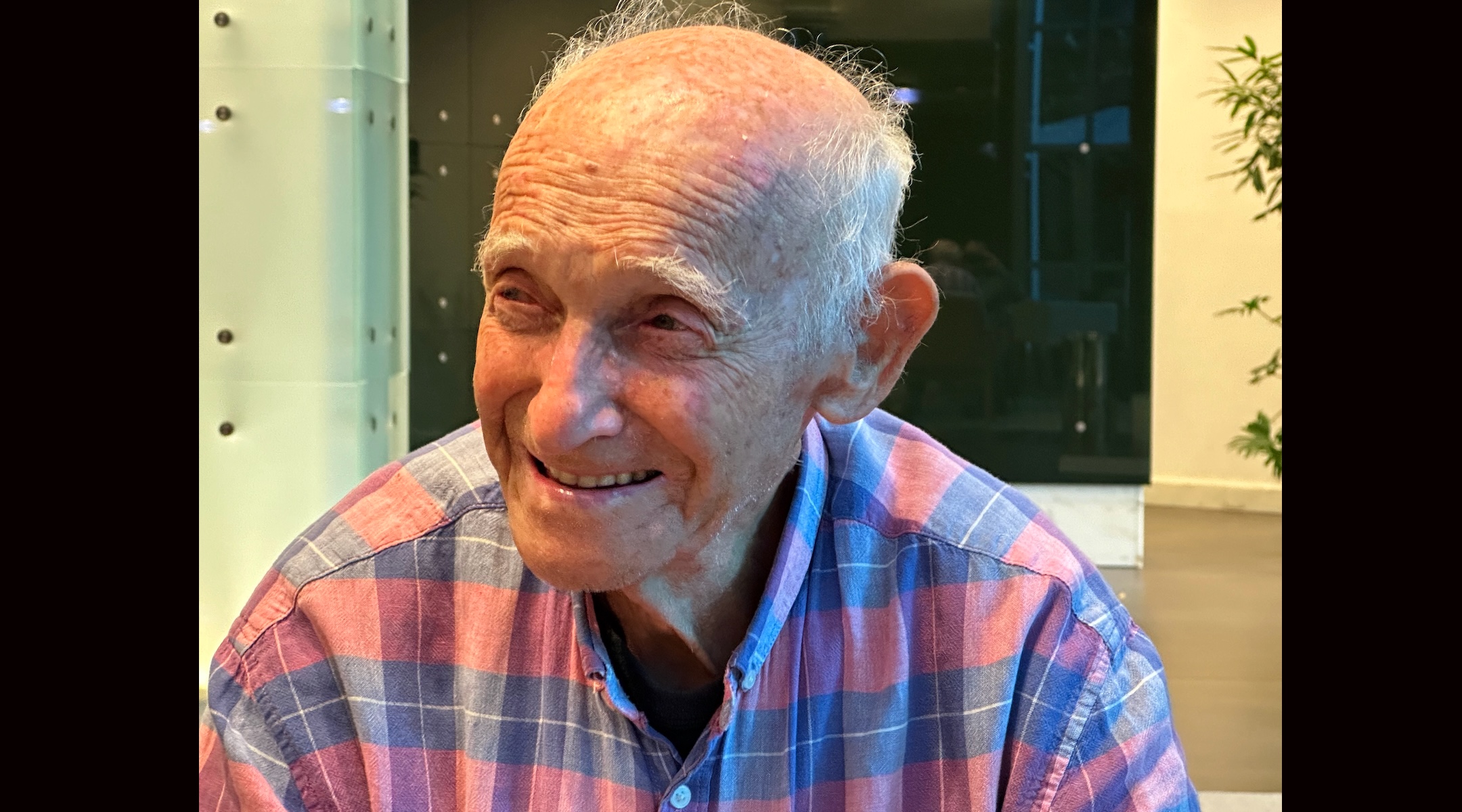
Next month marks the 80th anniversary of the end of World War II as well as the collapse of the Ustaše regime, the Nazi puppet government formally known as the Independent State of Croatia. Its territory — which encompassed much of today’s Croatia as well as neighboring Bosnia and parts of modern-day Serbia — housed around 30 concentration camps including Jasenovac and two camps specifically for children, Jastrebarsko and Sisak.
During its reign of terror, the Ustaše regime persecuted and murdered hundreds of thousands of Serbs, Jews and Roma, as well as Croatians opposed to their rule. The Catholic Church openly collaborated with the Ustaše, whose support came largely from young men with rural, blue-collar, uneducated backgrounds.
Today, the Balkan nation’s government is an ally to Israel, born in the wake of the Holocaust. But at the same time, nationalist sympathizers of Croatia’s once-feared Ustaše are finding increasing traction for their rhetoric. Those who want to tamp down on pro-Nazi expressions say they are not finding meaningful support among lawmakers.
“We proposed to have the same law as in Germany about Nazi symbolism, making it a felony punishable by prison, rather than a misdemeanor as it is now, but nothing happened,” said Zoran Ferber, 55, secretary-general of the Jewish Community of Zagreb. “We cannot propose a law if nobody else is supporting us.”
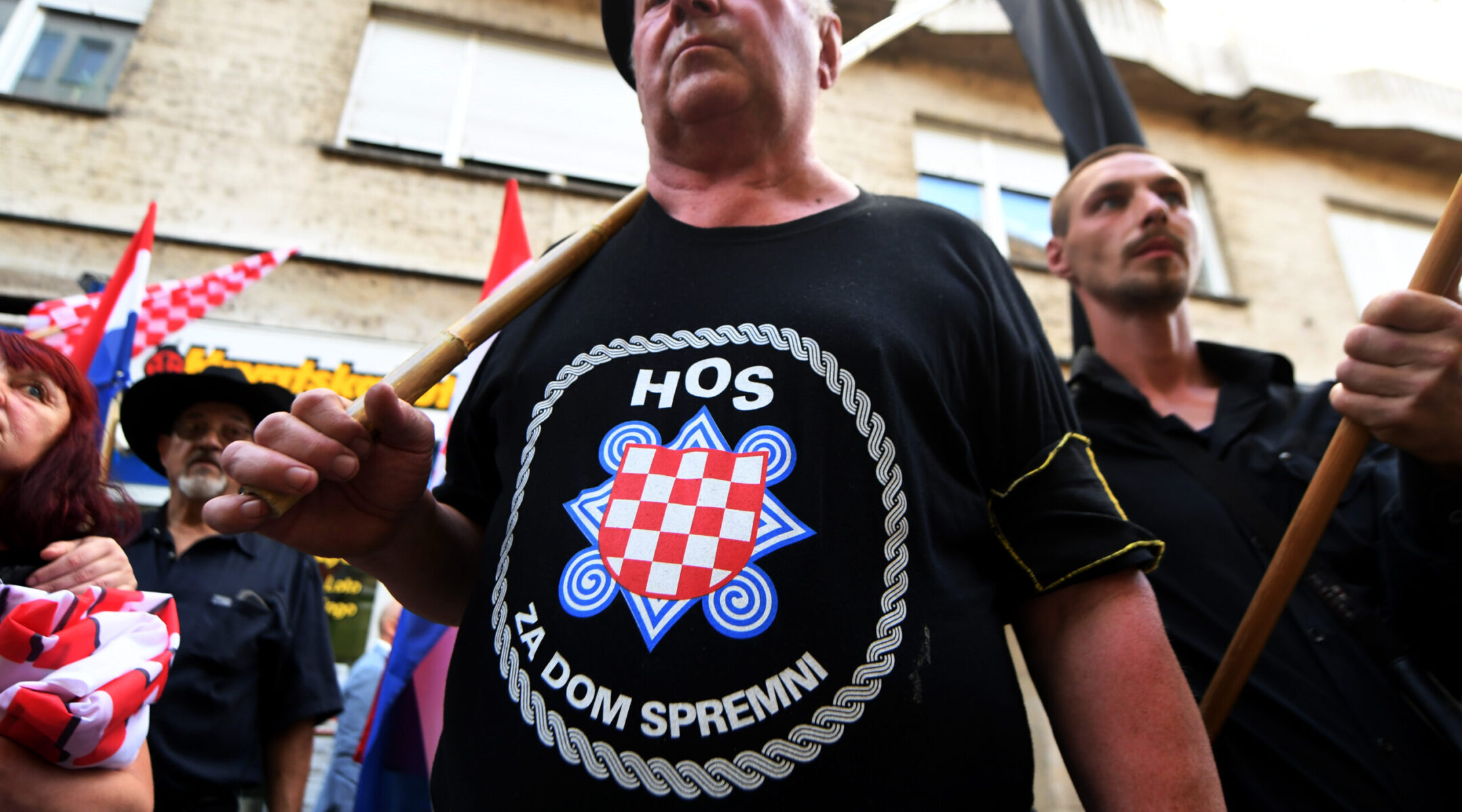
In 2016, Croatia’s then-president posed with a Ustaše flag during a trip to Canada, despite having previously expressed regret about the regime during a state trip to Israel. Today, nationalist sympathizers continue to use the prohibited, yet increasingly tolerated, slogan “Za Dom Spremni” (Defend the Homeland) — the Ustaše equivalent of the Nazi “Sieg Heil.”
In a sign of how widespread Nazi sentiments may be, Marko Perkovic, a Croatian singer who goes by Thompson, known for his Nazi sympathies, has sold more than 500,000 tickets for an outdoor concert in July.
Tena Banjeglav, program coordinator at Documenta: Center for Dealing With the Past, a Zagreb-based nonprofit group, notes that Nazi signs have potent symbolism for some Croatians.
“Normal people who know what these symbols meant in the past think it should be forbidden,” she said. “On the other hand, ethnic Croats usually connect this salute with the 1990s war against Serbia, not with the Ustaše. With this current far-right government, there is no chance it will be banned.”
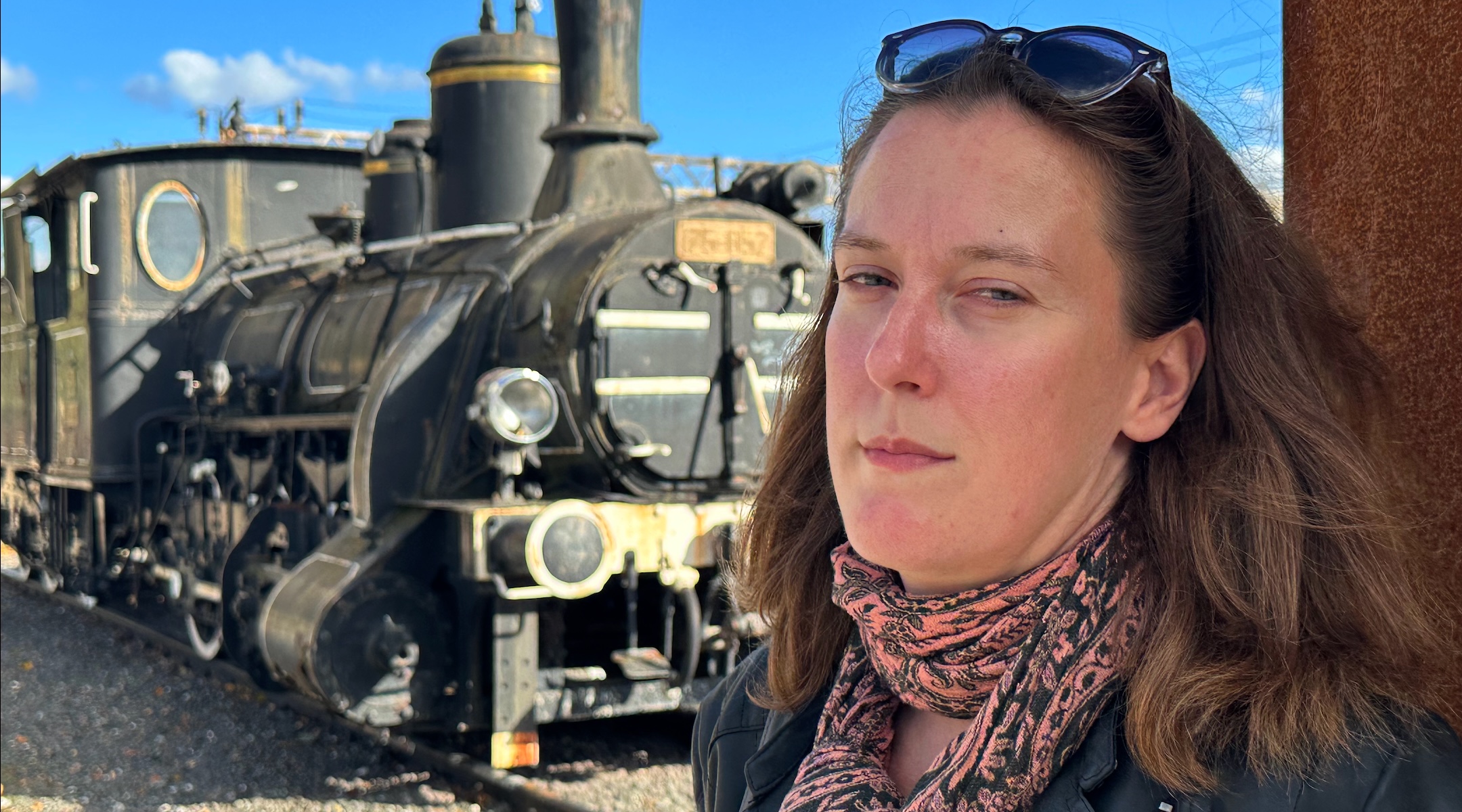
The current government, like other right-wing governments in Europe and beyond, has proven in recent years to be a staunch supporter of Israel. In 2020, Israel’s then-Foreign Minister Gabi Ashkenazi called Croatia “one of our best friends in Europe” and urged his counterpart, Gordan Grlić Radman, to move the country’s embassy from Tel Aviv to Jerusalem.
Croatia was one of just four members of the European Union to vote with Israel and the United States against a United Nations resolution calling for a ceasefire on Oct. 27, 2023, three weeks after Hamas attacked Israel and the day that Israeli troops entered Gaza for the first time. (The others were Austria, Czechia and Hungary, and the resolution passed 120-14.)
In a press release, the Croatian government said it “could not support a draft that does not mention or name Hamas, which perpetrated a massacre of civilians that is considered the deadliest day for Jews since the Second World War.”
During World War II, some 80% of Croatian Jews were killed, one of the highest percentages of any country in Europe; 13,000 Jews were beaten or bludgeoned to death at Jasenovac alone, which was so horrific that even senior Nazi officers warned camp commanders to use more humane methods of execution.

Before 1941, some 39,000 Jews lived in territory controlled by the Independent State of Croatia. Croatia is today home to 1,300 Jews, including Holocaust survivors ranging in age from 80 to 102. About 1,000 Jews live in Zagreb, with smaller numbers in Osijek, Split, Dubrovnik and five other cities, according to Saša Cvetković, vice president of the Jewish Community of Zagreb.
“We are the leftovers of the Jewish community,” said Cvetković, 50, estimating that 60% of Croatia’s Jews are elderly, and that 20 to 40 members die each year. “So imagine in a few years, if we don’t get newcomers, our kids will be the last generation. For me it’s very sad.”
Banjeglav, a non-Jew who helps document war crimes as part of an ongoing project, frequently gives visitors tours of Jewish Zagreb. Key attractions include the hilltop Mirogoj cemetery complex — which houses at least 1,500 Jewish tombstones — as well as Zagreb’s Ban Jelačić Square, a once heavily Jewish shopping district, and a parking lot on Praška Street where the city’s original Ashkenazi synagogue, built in 1867, was destroyed by the Ustaše regime in 1942.
Around that time, she noted, Ustaše commanders converted the Adriatic island of Pag into a concentration camp, “but now the locals don’t want to admit it was there. An Israeli film crew went there in 2015 to make a documentary and was physically attacked.”
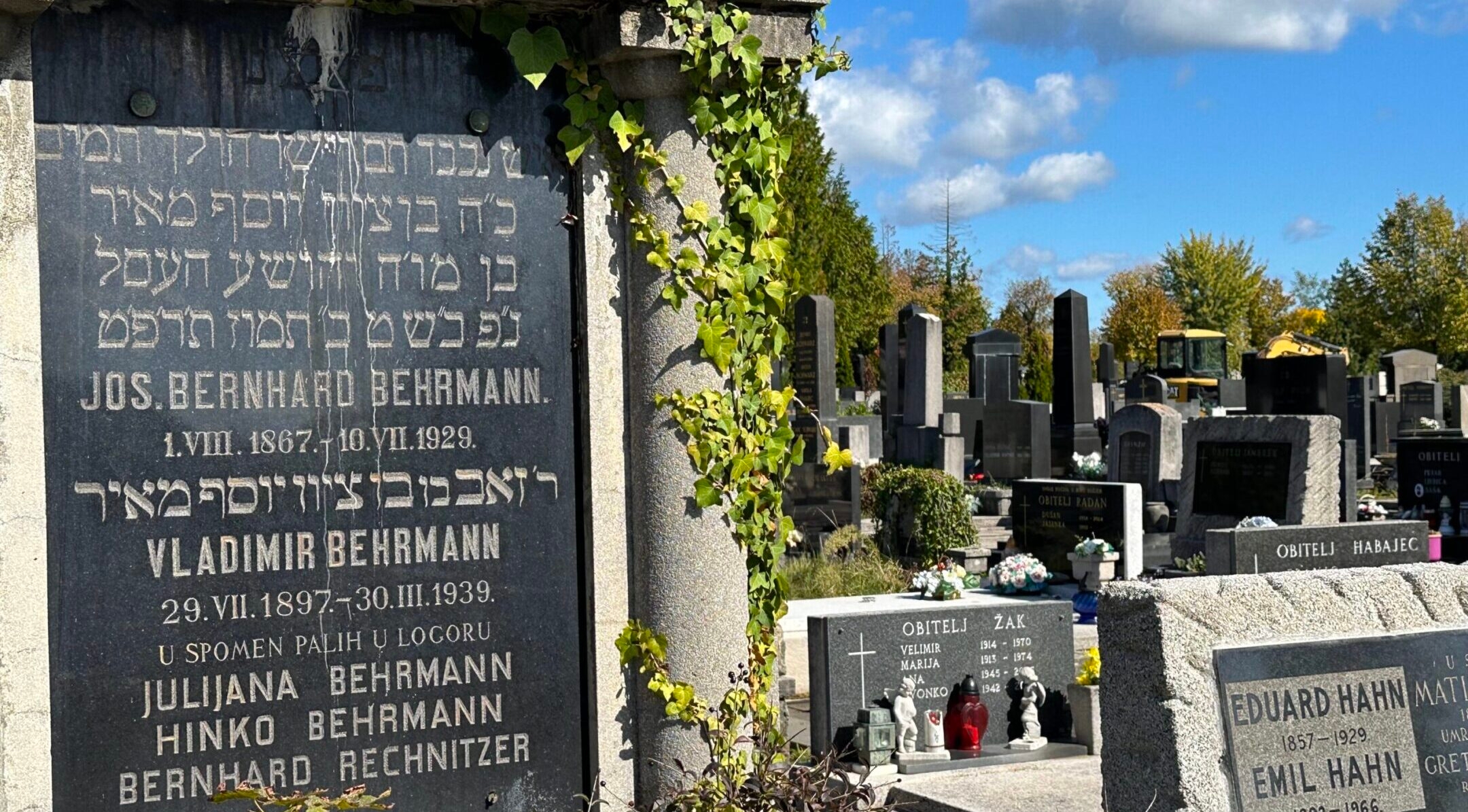
(Residents of Pag reportedly called police after spotting a group that included Israeli filmmakers and an American Jew whose mother was imprisoned on Pag. Police officers briefly confiscated the visitors’ passports, then escorted them off the island, according to contemporaneous news reports.)
What the tours do not include are any Holocaust memorials devoted just to Jews murdered by the Croatian fascists.
“We as a Jewish community don’t have one single memorial only for Jews who were brutally murdered by the Ustaše, because after the communists came to power in 1945, they made memorials for the victims of fascism and Nazi terror,” Cvetković said. “But who killed the majority of Jews here? Let’s be honest. It wasn’t the Nazis.”
Banjeglav said that even high-ranking government officials are guilty of Holocaust denial.
“They don’t want to accept responsibility,” she said, noting that in 2023, Croatia had the rotating presidency of the Berlin-based International Holocaust Remembrance Alliance. “The main theme was combating Holocaust denial and distortion, but everything they did was literally denial and distortion. All the events were in English and nothing was translated, so the Croatian public didn’t even know we had the presidency.”
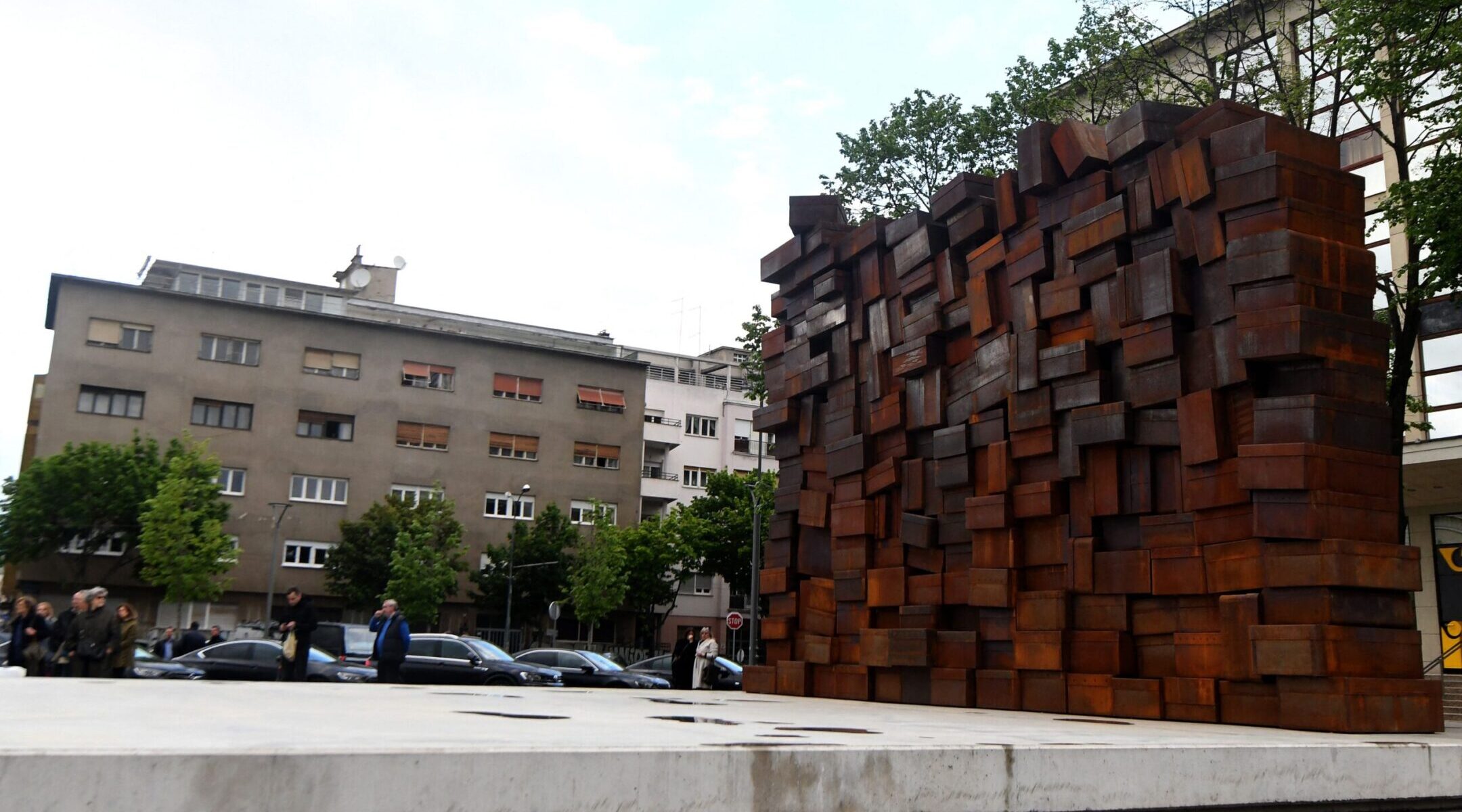
At Zagreb’s main railway station, a bronze sculpture 12 meters, or nearly 40 feet, high, dedicated three years ago, depicts a wall of suitcases stacked in a huge pile, along with a locomotive and a plaque inscribed in English, Hebrew and Croatian commemorating victims of the Holocaust. Yet local Jewish groups objected to it, arguing that the memorial neglects the Ustaše’s role in killing Jews and instead puts the blame on Nazi Germany.
“I will never go there,” said Cvetković. “For me, this is not a memorial. It was built without the blessing of the Jewish community.”
The contemporary Jewish community is small, scattered across several cities, with Zagreb as the largest hub. For the past 20 years, Pinchas and Raizel Zaklos have been the Israeli-born Chabad emissaries there, operating a synagogue on Rokova Street, in a neighborhood that was heavily Jewish before World War II. It’s about a 10-minute walk from the Zagreb Funicular, one of the city’s most popular tourist attractions.
The four-story building boasts Croatia’s first new mikvah since the war, and a small shop that sells kosher meat from Poland, for the 30 or so Jews who keep kosher. There’s also an Israeli-style café and space for Jewish students who otherwise have nowhere just for them to work or socialize.
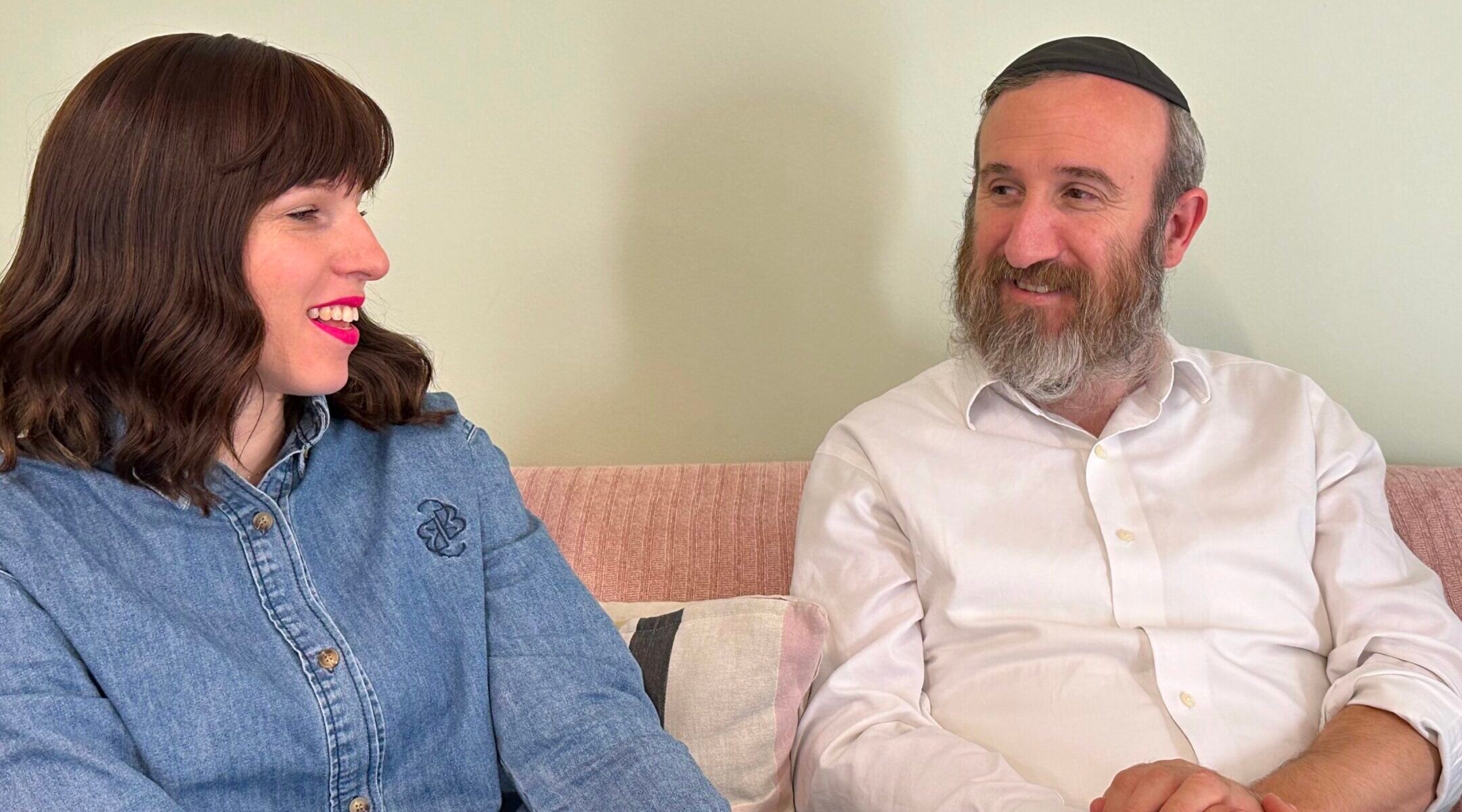
Between 50 and 60 people show up for Friday night services, and twice a month, Bet Chabad offers activities for Jewish teens. On Hanukkah, it sponsors a public menorah-lighting on Britanski trg, one of Zagreb’s main plazas. All its activities are funded by donations from abroad.
Despite their efforts, said Raziel Zaklos, “there’s a huge lack of understanding. The community here sees Judaism through the lens of the Holocaust. And among the younger generation, nobody wants to identify with those memories. They want to look to the future.”
In September, Croatia’s government announced that 52 abandoned Jewish cemeteries around the country would be protected as “memorial heritage” to preserve the memory of Jews who were persecuted during World War II. Another 15 are already protected as independent cultural sites.
Acts of vandalism have spiked since the beginning of the war in Gaza. For example, graffiti recently appeared on the streets of Zagreb saying “Zidove na vrbe” — “Hang the Jews.” And last October, the Jewish community broke all ties with the Anti-Fascist League — which had co-sponsored Holocaust commemorations in the past — after that group came out with a statement condemning Israel’s war in Gaza as a genocide.
Banjeglav sees this as one more challenge in forcing her fellow Croatians to come to terms with their wartime past.
“For me, nothing is too controversial,” she said of the work she and her colleagues at Documenta do to fight Holocaust revisionism and glorification of war criminals. “If we continue denying and sweeping these issues under the carpet, we won’t get anywhere. That’s why some people really don’t like us — but it’s part of our job.”
This article originally appeared on JTA.org.
